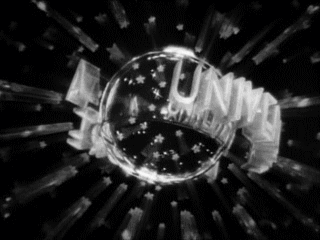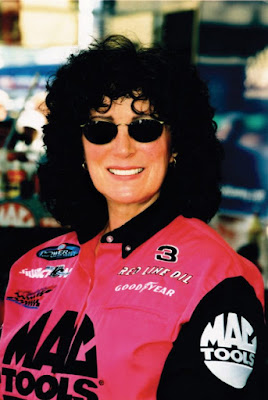 |
New York World's Fair Mustang Introduction.
|
The recession of the late 1950s hit Detroit especially hard. Money was tight and car sales fell for the Big Three [General Motors, Ford, and Chrysler]. Factories were struggling to keep their workers employed and their plants open. In response to that, Ford Motor Company (FoMoCo) reorganized their corporation and formed an Automotive Assembly Division promoting middle-management marketing man Lee Iacocca to head the division.
Lee Iacocca's challenges were many, but his goals were well-defined. He championed shifting production to smaller, fuel efficient cars and dressing them up to enhance their appeal to an economy-minded market. His first success was the Falcon Futura. The car was stylish, comfortable, and economical. Afterall, gas averaged thirty-one cents a gallon in 1961.
Iacocca formed a secret Fairlane Committee to come up with a new car concept unlike anything else on the market. FoMoCo needed a dynamic new car to capture a greater share of the youth market.
Their market research in 1961 indicated that a tidal wave of teenaged Baby Boomers [post World War II babies] were coming of age soon and itching to get behind the wheel of a sporty-looking car they could afford. By 1965, 40% of the United States population would be under 20 years old. By 1970, half of Americans would be under 25 years old. FoMoCo wanted to tap into that market.
 |
The Edsel's 1958 introduction with Edsel Ford's three sons.
|
The wounds from the Edsel debacle were still fresh at FoMoCo leading to a company shakeup. Iacocca knew the Edsel was advertised as the Car of the Future, but it was a product in search of a market it never found. Here was a market in search of a product. FoMoCo tailored their new product for this new market.
Since the original 1955 two-seater Thunderbird was reborn as a four-seater, suburban luxury car in 1958, FoMoCo received lots of mail asking for another two-seater. But Ford's market research indicated a two-seater did not have the mass appeal they were looking for. That market was limited to a mere 100,000 units.
The parameters for their new concept car required it to be sporty but capable of seating four passengers; it had to be lightweight, under 2,500 pounds; and it had to be inexpensive, no more than $2,500 with special equipment included as part of their standard model to sweeten the deal.
Helping to cut engineering and production costs, the chassis and the power train of the Ford Falcon were chosen. What this car needed was a new skin. Iacocca initiated a competition among seven designers to come up with clay mockups of the exterior design fit to specific platform specifications.
On August 15, 1962, Henry Ford II picked the model he liked best by saying "That's it!" The winning model was designed by Dave Ash's design team, for Joe Oros, FoMoCo's Design Studio head. In profile, the car had a long hood, a swept-back cabin, and a short deck [trunk].
Car designers want to see their vision transformed into sleek sculpted steel, but automotive engineers have to figure how to put the actual car together and make it work. Once the model was approved, the battle between the designers and the engineers began in what they called "the battles of the inch."
First was the battle of the radiator cap that would not fit under the stylist's low hood. The solution was to raise the hood a quarter inch and the engineers counter-sunk the cap.
Next, the stylists designed the back bumper to fit flush with the rear quarter panels for a clean look. The engineers wanted to simply bolt the bumper with brackets onto the back of the car like they had always done. The designers won that battle.
The last disagreement was between Henry Ford II and Lee Iacocca over leg-room for the rear seats. Ford was a large man who wanted an extra inch. Iacocca argued that it would spoil the lines of the car. Ford won that battle.
Next, the car needed a name. Hundreds of names were whittled down to several finalists including Colt, Bronco, Mustang, Puma, Cougar, and Cheetah. Cougar was the front runner until Mr. Ford became embroiled in a messy divorce, and the publicity department was afraid the name Cougar might cause some unnecessary notority or embarassment for their boss.
At the same time, the name Mustang did well in their market research. The name was felt to embody the spirit of the wide open spaces and recalled the famous World War II fighter plane. Once the name was decided upon, the Mustang's signature galloping horse front grill was designed.
What has become one of the most iconic and famous emblems in automobile history was criticized early on by a reporter at a FoMoCo press conference. His observation was that the horse was running in the wrong direction. Obviously, the reporter spent too much time at the track where the ponies only run counter-clockwise. Iacocco's wise reply was "Wild horses run anywhere they damn well please."
The Mustang was introduced in Ford showrooms on April 17, 1964. It came as a two-door coupe or convertible. Five months later, a three-door hatchback was introduced. The Mustang came with a three-speed automatic transmission or a four speed manual, both console mounted on the floor. At first, there were two, straight-six engine choices available, with V-6 and V-8 options offered later in the Mustang's run. The basic car was equipped with front disk brakes, all for the low sticker price of $2,368.
Iacocca gave free rein to his marketing expertise and saturated the media with Mustang ads like no product had before. FoMoCo ran glossy ads in national magazines with stories about their youth-oriented car, and 420 local television stations were sent footage of the car for their feature stories.
Radio DJs were given Mustangs to test drive and plug over their airwaves. In Detroit, radio jocks were allowed to put the Mustang through its paces on Ford's test track in Dearborn, Michigan. Images of the Mustang appeared on 15,500 outdoor billboards nationwide and the car was displayed in the lobby of Holiday Inn motels and other high traffic venues like airport terminals in twelve major United States cities.
The evening before the car's debut, FoMoCo bought simultaneous time on all three major television networks from 9:30 to 10:00 pm. Twenty-eight million viewers of Perry Mason [CBS], Hazel [NBC], and Jimmy Dean [ABC] were wowed with Mustang advertising.
Forty-four college newspaper editors were given the use of Mustangs to show off on their campuses for the spring term. No stone was left unturned to generate interest. As a final touch, Hayden Fry, football coach of the Southern Methodist University Mustangs, received a blue and red [school colors] Mustang as part of the car's debut launch.
After the Mustang's meteoric rise in the marketplace, Time and Newsweek featured simultaneous cover stories on the Mustang that Iacocca said led to the sale of an extra 100,000 units. By December of 1964, the Mustang had "the most successful new car launch ever introduced by the auto industry," reported Frank Zimmerman, Ford marketing chief.
At first, FoMoCo planned to produce only 100,000 Mustangs using only a portion of the Dearborn Assembly Plant. Before the car went to market, it was clear that demand was going to be greater than anticipated, so the whole plant was changed over to exclusive "Pony Car" production. Soon, another Ford plant in San Jose, California went online to boost yearly capacity to 360,000 cars.
In 1965, a third Ford plant in Metuchen, New Jersey was added to boost output to 440,000 cars prompting FoMoCo Assistant General Manager Don Frey to credit the Mustang's success on unprecedented market penetration. The Mustang is the only Ford nameplate that has been in continuous production since its introduction.
Latest Mustang Trotted Out

































